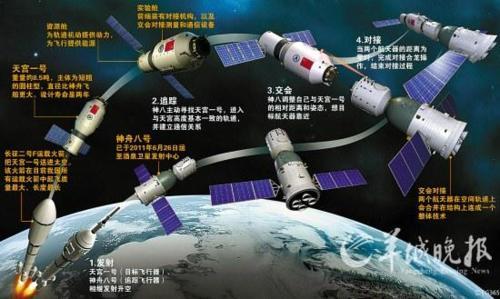
China’s first experimental space laboratory was successfully lifted into orbit from the spaceport in Jiuquan at 9:16am EDT this morning. The lab will circle the earth at altitudes between 300-350 kilometers for the next two years. During that time China will send three Shenzhou spacecraft to dock with Tiangong 1. Shenzhou 8 is scheduled to be launched in early November. It will not carry Chinese astronauts but will dock with the space lab autonomously. Shenzhou 9 and Shenzhou 10 are scheduled to be launched on as yet unspecified dates during 2012. After Shenzhou 10 leaves the space lab, China’s mission managers announced they will move Tiangong 1 into a higher orbit to conduct unspecified space experiments until it runs out of fuel. Shortly before that happens Chinese mission controllers will perform a de-orbiting maneuver designed to bring Tiangong 1 back to earth, hopefully in a pre-determined splashdown zone in “uninhabited” waters in the Pacific Ocean.
Senior officials leading China’s human space flight program held a press conference on September 28 to brief reporters on the Tiangong 1 mission and to answer questions about China’s longer term intentions. In response to a reporter’s question, Spokesperson Wu Ping confirmed that China currently has no plans to send humans to the moon. A human lunar mission has not been included in Chinese government planning, and there is no specific timetable. However, Wu also said it was only a matter of time before Chinese land humans on the moon. She confirmed earlier reports that a group of experts had been formed to conduct a feasibility study.
In a separate press conference a spokesperson for China’s People’s Liberation Army defended the Chinese military’s participation in the human space flight program, stating it was a common practice in the history of many other national space programs. He added that the space enterprise was a large, complex and high-risk endeavor that China’s military was best-suited to coordinate.
